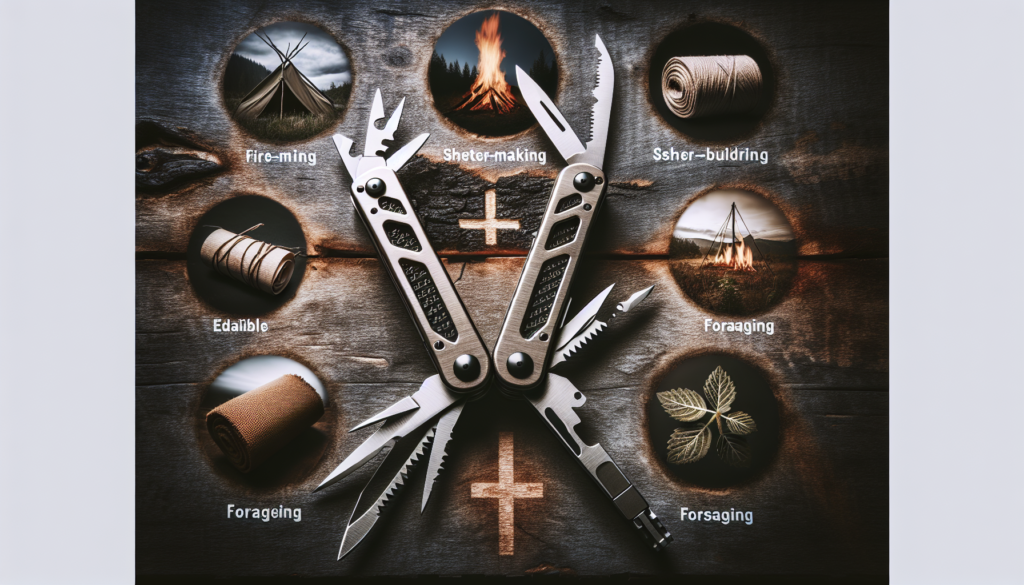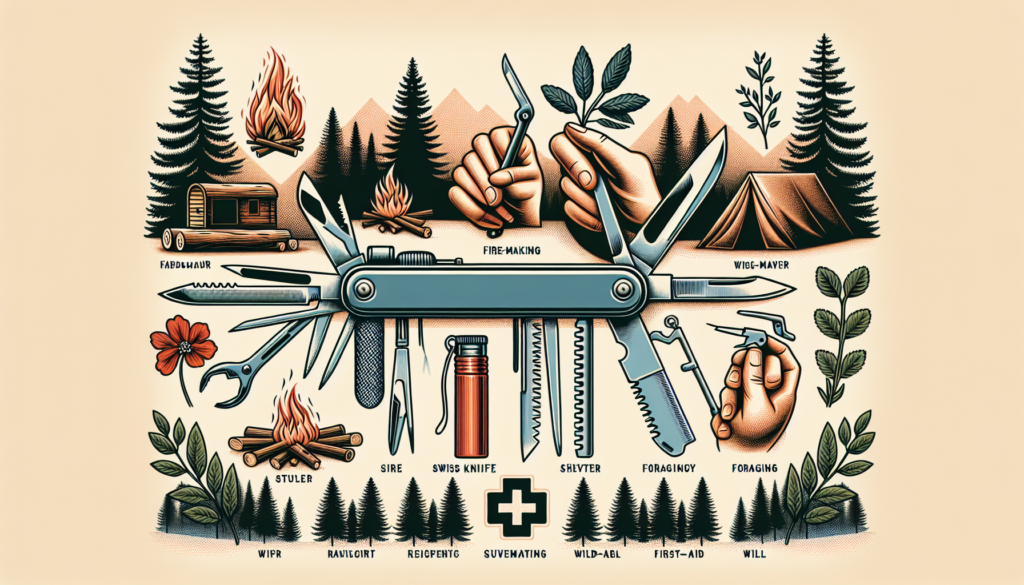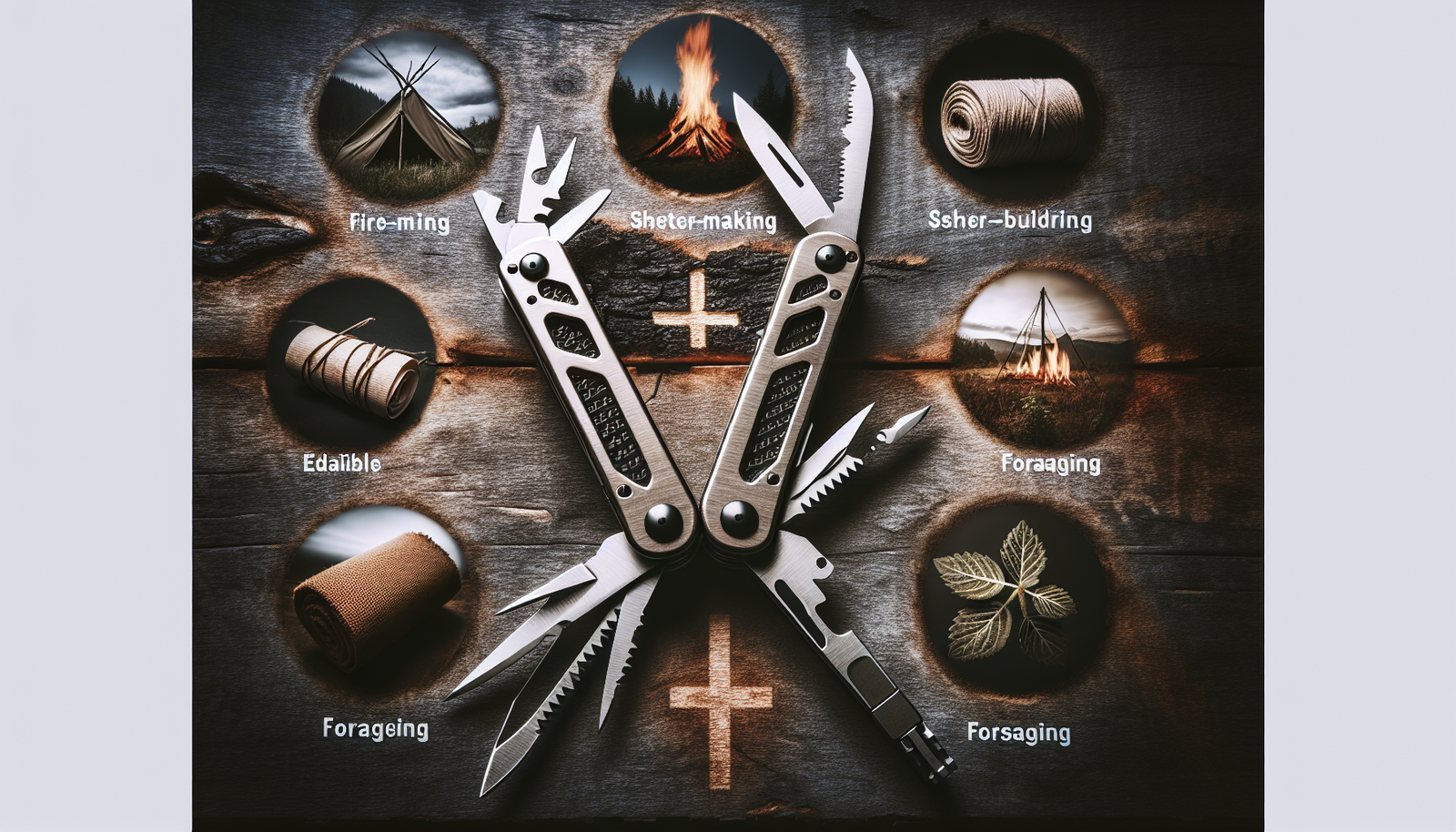Are you ready to learn essential survival skills? In our ‘Basic Survival Skills’ section, you will find a comprehensive guide that caters to beginners and seasoned adventurers alike. From outdoor survival basics to wilderness survival skills, we have you covered. Our resources are designed to equip you with the necessary knowledge and provide you with a Survival Skills Checklist. Whether you are interested in learning primitive survival techniques or simply want to be prepared for any situation, we’ve got you covered. So, get ready to dive into the world of survival skills and be prepared for any challenge that comes your way. Learn survival skills today!
Survival Skills Basics
Welcome to our ‘Basic Survival Skills’ section, where beginners and seasoned adventurers alike can discover essential survival techniques and tips. Our comprehensive guide covers a wide range of topics, from ‘Outdoor Survival Basics’ to ‘Wilderness Survival Skills‘, ensuring you’re prepared for any situation. Whether you’re looking to learn primitive survival skills or seeking an extensive ‘Survival Skills Checklist’, our resources are designed to equip you with the necessary knowledge.
Understanding the Importance of Survival Skills
Survival skills are crucial for anyone venturing into the great outdoors. Whether you’re on a weekend camping trip or exploring remote wilderness areas, having a solid foundation in survival skills can mean the difference between life and death. Understanding the importance of these skills allows you to anticipate and prepare for potential dangers, ensuring your safety and well-being in any situation.
Assessing and Managing Risks
One of the fundamental aspects of survival skills is assessing and managing risks. It’s essential to be aware of potential hazards and take proactive measures to mitigate them. This includes evaluating the environment, identifying potential dangers such as hazardous terrain or adverse weather conditions, and taking appropriate precautions. By being vigilant and proactive, you can reduce the likelihood of accidents or emergencies.
Developing a Survival Mindset
Survival is as much about mental resilience as it is about practical skills. Developing a survival mindset involves cultivating a positive and adaptable attitude, staying calm in stressful situations, and being resourceful with the available resources. Having a resilient mindset enables you to think clearly and make sound decisions, even in challenging circumstances. By developing a survival mindset, you can stay focused and increase your chances of survival.
Shelter Building
Finding Suitable Shelter Locations
In a survival situation, finding a suitable shelter location is crucial. Look for areas that offer natural protection from the elements, such as caves, rock formations, or dense foliage. Avoid low-lying areas prone to flooding or areas exposed to strong winds. It’s also essential to consider proximity to water sources and the availability of fuel for fire. By selecting an appropriate shelter location, you can increase your comfort and protect yourself from the elements.
Constructing a Debris Shelter
A debris shelter is one of the most basic and effective shelters you can build in the wilderness. It involves using natural materials such as branches, leaves, and debris to create a protective structure. Start by finding two sturdy trees close together and place long branches against them to frame the shelter. Layer smaller branches, leaves, and debris on top to create insulation and waterproofing. A well-built debris shelter can provide excellent protection against wind, rain, and cold temperatures.
Building a Tarp Shelter
Another option for shelter building is using a tarp. Tarps are lightweight, versatile, and easy to carry in a survival kit. To build a tarp shelter, start by selecting a suitable location and tying one end of the tarp to a tree or secure anchor point. Stretch the tarp tightly and secure the other end to a second anchor point. Use additional ropes and stakes to secure the sides and create a stable structure. A tarp shelter provides quick and effective protection from rain and wind.

Fire Starting
Choosing the Right Fire Starting Method
Fire is essential for survival as it provides warmth, light, and a means to cook food. When starting a fire, it’s important to choose the right method based on the available resources and conditions. Common fire starting methods include using a fire starter tool, matches, or a lighter. Additionally, learning primitive fire starting techniques such as friction-based methods can be valuable in situations where modern fire-starting tools are not available.
Collecting and Preparing Firewood
Collecting and preparing firewood is an important step in fire building. Look for dead and dry wood, as it ignites more easily. Gather different sizes of firewood, including tinder (small, dry materials like twigs or bark), kindling (small sticks), and fuelwood (larger logs). Properly preparing the firewood by breaking it into manageable sizes and arranging it in a strategic manner will ensure a steady and long-lasting fire.
Building and Maintaining a Fire
To successfully build and maintain a fire, start by preparing the fire pit. Clear the area of any debris and dig a shallow pit to contain the fire. Place a layer of tinder in the center of the pit and arrange the kindling and fuelwood in a teepee or log cabin structure. Use the chosen fire-starting method to ignite the tinder, and carefully tend to the flame by adding additional fuelwood as needed. Remember to maintain a safe distance from the fire, keep it under control, and extinguish it completely before leaving the area.
Water Procurement
Identifying and Collecting Water Sources
Water procurement is vital in a survival situation, as dehydration can quickly lead to serious health issues. Start by identifying potential water sources such as rivers, streams, lakes, or natural springs. However, not all water sources are safe to drink. It’s crucial to collect water from reliable sources and avoid stagnant or contaminated water. Look for clear, flowing water and make use of containers or improvised methods to collect and store the water.
Purifying Water for Safe Consumption
Even if the water appears clean, it’s essential to purify it before consuming to eliminate harmful pathogens and bacteria. Boiling is the most reliable method for water purification. Heat the water to a rolling boil for at least one minute (or longer at higher altitudes), and allow it to cool before drinking. Alternatively, water purification tablets or filters can also be used to eliminate harmful contaminants.
Alternative Water Procurement Methods
In situations where clean water sources are limited, it’s important to be resourceful and explore alternative methods for water procurement. This can involve collecting rainwater using natural funnels or creating homemade solar stills to extract water from plants. Additionally, learning wilderness survival skills such as finding and harvesting edible water sources like cacti can also provide life-saving hydration options.

Food Foraging
Identifying Edible Plants and Insects
When foraging for food, it’s crucial to have knowledge of edible plants and insects in your surroundings. Familiarize yourself with common edible plants and their identifying features such as leaves, berries, or roots. Pay attention to any poisonous look-alikes and take caution when consuming unfamiliar plant species. Insects can also be a valuable food source, but it’s essential to properly identify edible insects and avoid potentially harmful species.
Avoiding Poisonous Plants
While knowledge of edible plants is important, so is knowing how to avoid poisonous plants. Many plants in the wilderness may look harmless but can cause severe illness or even be lethal if ingested. Learn to recognize common poisonous plants and their distinguishing features, such as distinctive leaf or fruit patterns. Taking the time to research and study local flora can prevent potentially life-threatening mistakes.
Trapping and Hunting Techniques
In a survival situation, hunting and trapping can provide a valuable source of food. Learning basic trapping and hunting techniques can greatly increase your chances of securing a meal. Set up snares or traps in strategic locations near animal burrows or trails, using natural baits or lures to attract prey. Additionally, learning basic hunting techniques such as tracking, stalking, and making improvised weapons can help you successfully hunt for food.
Navigation and Signaling
Using a Compass and Map
Navigating your way through unfamiliar terrain is a crucial survival skill. Learn how to use a compass and map to determine your location and plot a course to safety. Familiarize yourself with map symbols, contours, and how to read topographic maps. Use a compass to identify cardinal directions and orient yourself properly. Having these skills will allow you to navigate accurately and effectively, even in challenging situations.
Reading Natural Signs and Landmarks
Nature provides a wealth of signs and landmarks that can assist in navigation. Pay attention to the position of the sun to determine east and west, as well as shadows that can indicate time of day. Study the behavior of animals and their migration patterns to find water sources or potential human settlements. Recognizing natural signs and landmarks can help you stay on track and find your way to safety.
Creating Distress Signals
In an emergency situation, being able to signal for help is crucial. Learn how to create distress signals using available resources such as signaling mirrors, whistles, or smoke signals. Three universally recognized distress signals are the international distress signal SOS (three short, three long, three short signals), using three fires in a triangle formation, or creating visible markings in an open area that can be spotted from the air. By creating effective distress signals, you increase your chances of being rescued.
First Aid and Medical Skills
Basic First Aid Procedures
Having basic first aid knowledge is essential in any survival situation. Learn how to perform CPR, treat wounds and bleeding, splint fractures, and administer basic medications. Understanding the basics of first aid allows you to provide immediate care and stabilize any injuries or medical issues until further assistance is available.
Creating a First Aid Kit
Having a well-stocked and properly organized first aid kit is crucial for any outdoor excursion. Include supplies such as bandages, antiseptics, pain relievers, adhesive tape, and any personal medications. Customize your kit based on individual needs and the nature of your adventure. Regularly check and update your kit to ensure it remains fully stocked and ready for use.
Handling Common Injuries and Illnesses
In a survival situation, it’s important to know how to handle common injuries and illnesses that may arise. This includes treating cuts, burns, sprains, insect bites, and allergic reactions. Learning how to identify and manage common illnesses such as dehydration, heat exhaustion, or hypothermia is also essential. By being knowledgeable in handling these medical needs, you can effectively respond to emergencies and prevent further complications.
Survival Tools and Equipment
Essential Survival Gear
Having the right survival tools and equipment is vital for any outdoor adventure. Some essential items to include in your survival kit are a multi-tool, flashlight, fire starter tool, extra clothing layers, a compass, a whistle, a space blanket, and a water filter or purification tablets. Customizing your gear based on the specific environment and potential hazards will ensure you’re adequately prepared for any situation.
Knife Skills and Safety
A reliable and versatile knife is a crucial tool in a survival situation. However, it’s important to have proper knife skills and prioritize safety. Learn how to safely handle, sharpen, and use a knife for various tasks such as cutting, carving, or preparing food. Understanding knife safety and practicing proper techniques will minimize the risks of accidents and ensure efficient use in survival scenarios.
Improvising Tools and Equipment
In some situations, you may find yourself without specific survival tools or equipment. Improvising with what you have available can be a valuable skill. Learn how to create makeshift tools and equipment using natural resources, such as using rocks as hammers, branches as spears, or tree bark as cordage. By developing improvisation skills, you can adapt to challenging situations and make the most of limited resources.
Self-Defense and Personal Safety
Awareness and Avoidance Strategies
Maintaining situational awareness is essential for self-defense and personal safety in any environment. Learn to observe your surroundings, identify potential threats, and avoid dangerous situations when possible. Use common sense and trust your instincts to minimize risks and stay out of harm’s way. By being aware and proactive, you can prevent many potentially dangerous situations.
Self-Defense Techniques
In a survival situation, knowing basic self-defense techniques can provide an added layer of protection. Consider taking self-defense classes or learning martial arts techniques that can be applied in real-life scenarios. Focus on learning effective strikes, blocks, and grappling techniques. Remember, the goal of self-defense is to create an opportunity to escape rather than engage in a prolonged confrontation.
Emergency Situational Response
In emergencies, quick and appropriate response is crucial. Familiarize yourself with common emergency situations such as natural disasters, animal encounters, or medical emergencies. Learn how to stay calm, assess the situation, and take necessary actions to ensure your safety and the safety of others. Being prepared for emergencies can make all the difference in your survival.
Survival Skills Checklist
Creating a Personalized Survival Kit
Having a comprehensive survival kit tailored to your specific needs is essential. Consider the environment, potential risks, and duration of your adventure when selecting items for your kit. Include essentials such as shelter materials, fire-starting tools, first aid supplies, water procurement methods, signaling devices, and food procurement tools. Regularly review and update your survival kit to ensure it remains reliable and up to date.
Maintaining and Updating Your Survival Gear
While having a well-stocked survival kit is important, regular maintenance and updates are equally crucial. Inspect your gear regularly for any signs of wear or damage, and replace or repair as needed. Check the expiration dates on medications and perishable items, and replenish them before they expire. Keep an inventory of your gear and ensure everything is properly stored and easily accessible.
Reviewing and Practicing Essential Skills
Survival skills are perishable, meaning they require practice and continuous review. Set aside time to regularly refresh your knowledge and practice essential skills such as fire starting, shelter building, navigation, and first aid procedures. Consider participating in survival training programs or attending workshops to enhance your skills. By regularly reviewing and practicing these skills, you’ll be better prepared for any survival situation.
In conclusion, acquiring Basic Survival Skills is essential for anyone venturing into the outdoors. By understanding the importance of these skills, assessing and managing risks effectively, and developing a survival mindset, you can increase your chances of survival in any situation. From shelter building and fire starting to water procurement and food foraging, each skill is vital for sustaining life in the wilderness. Additionally, navigation and signaling, first aid and medical skills, survival tools and equipment, self-defense and personal safety, and maintaining a well-prepared survival kit are all key components of being fully prepared. Remember to regularly review and practice your skills, and stay updated on the latest techniques and knowledge. With the right mindset, skills, and resources, you can confidently embark on outdoor adventures, knowing you have what it takes to survive and thrive. Stay safe and enjoy the great outdoors!

